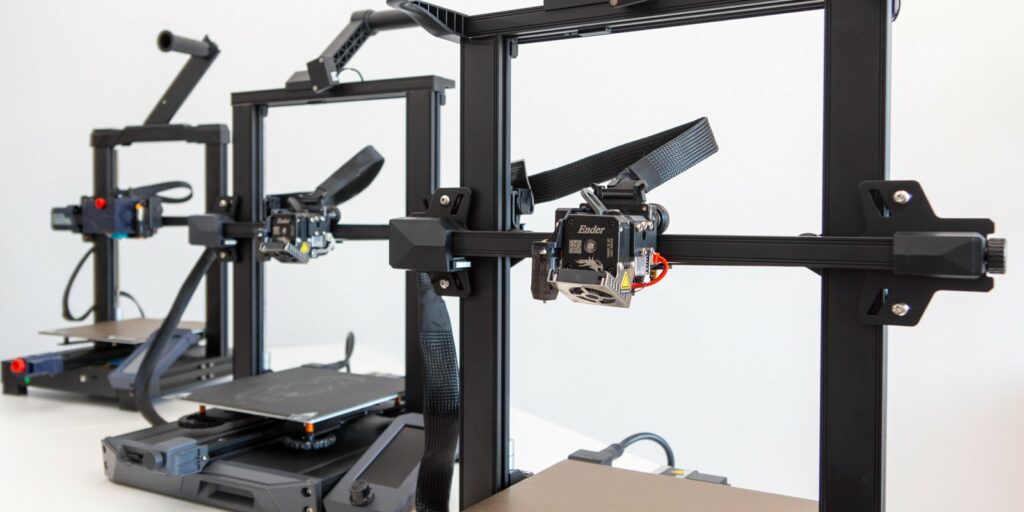Are you looking for the Best 3D Printer for Under $500 in 2023? The possibilities of finding a 3D printer under $500 were virtually nonexistent a few years ago. Now there are plenty to choose from. Modelers, hobbyists, and small businesses now have access to 3D printing. You can find out what the top models are on the market in this article, as well as how to choose the one that meets your needs best.
If you want to make an informed decision when it comes to 3d printers, you can find a wealth of information on Linquip’s website. We offer you access to the best additive manufacturing and 3d printing tools on the market today, so you can perform your duties more efficiently. We provide information on Linquip’s “What Is Additive Manufacturing and 3D Printing?” page that explains what Linquip offers based on the intended use.
Is the idea of buying a 3D printer something you have been considering? Linquip offers a broad selection of Additive Manufacturing and 3D Printing Products that can help you find the right product for your needs. Linquip’s platform allows you to get quotes for 3D printers. With our online form, you can receive quotes from several Additive Manufacturing and 3D Printing Companies and Suppliers quickly and easily.
Cheap 3D printers do not all offer the same features. They produce models of different sizes and varying degrees of detail. Many of them are filament printers, but several resin printers can also be found in this price range. It can be challenging to strike the right balance between performance and cost, and suitable technology can be confusing.
3d Printer Buying Guide
The first thing you should do is decide if you will be making miniatures and tiny models. In that case, you will need a resin printer. If not, you will need a filament printer. Next, determine how large the objects need to be. If the size of your prints is very large, you will have very few options. Finally, decide how much you are willing to spend.
Choosing the cheapest printer is not always a good idea because, at least for those items on this list, those printers will produce the poorest quality results and the most frustration. Any of these top picks will give you great results if you can afford them.
The choice of a 3D printer can be challenging, especially if you’re a beginner. Here are some guidelines to guide you:
Modeling Methods
There are currently several typical modeling methods available on the market, including:
Stereoscopic Technique
This technique is widely used and extremely accurate. It can be used to create complex shapes with great detail.
Inkjet Printing Method
It is recommended to use the high-resolution inkjet printing method if you are interested in the model’s color.
Unified Deposition Modeling
By using this method, you will benefit from being both highly efficient and cost-effective.
Powder Fixation (Adhesive)
It is worth considering this method if you are creating architectural models or products that require a high degree of color development.
Essential Functions
To save money, some 3D printer models will sacrifice some features. When choosing, consider the parts that are important to you, components that will be of great service.
Set Up and Ease of Use
In our price range, resin 3D printers are ready-to-use, while filament models often require some assembly. The ease of operation also varies from model to model. We pick models that help buyers determine which model is best for them.
Calibration Ability
The main task of calibration is to adjust the height of the “bed.” The calibration can either be automatic or manual.
There is a printer model that only allows manual adjustments. In the beginning, setup can take a long time, and sometimes this can negatively impact your model. For this reason, if you are a newbie, choose pieces that are auto-calibrated to save time and improve finishing.
Slicing Software
If you are planning to model with a 3D printer, you will need cutting software. There is a lot of free software available today, while some other templates can be purchased.
For beginners, it would be best to use models with easy-to-use software or to use products with open-source code that are easy to install.
Select by Filament
3D printer materials (filament) vary depending on the modeling method you choose. Specifically:
Embossed Printing
Epoxy resin is the primary material. It has a high finish, but it isn’t cheap.
Inkjet Printing Method
The main advantage of acrylic resin is that it has a smooth surface, but it is quite fragile when struck.
Fused Deposition Modeling
In general, ABS/PLA resin is a pretty decent material, except that it has a slightly rough finish.
Build Volume
The majority of 3D modelers work on small projects or build complex assemblies from a small number of components. However, buying a low-cost 3D printer isn’t necessarily a barrier to your ambitions. To cater to all potential users, we explored a variety of alternatives.
Value
It’s not always true that price equals value. Although our top picks are relatively affordable, they’re not always the lowest-priced 3D printers out there. The model we selected is made by a brand known for its quality and expertise, which should make it a reliable investment for years to come.
Method of Fixing Powder (Binding)
A less expensive type of flour is plaster powder, but it is brittle and fragile.
The Best Cheap 3d Printer Reviews
For those looking to invest in their first 3D printer, we set a price ceiling of $500 so each of our picks would fall within what would be considered a reasonable price. Nevertheless, the price was not the only thing that was taken into account. As a result, these 3D printers are among the best budget models on the market right now.
1. Anycubic Photon Mono X 4K Resin 3D Printer
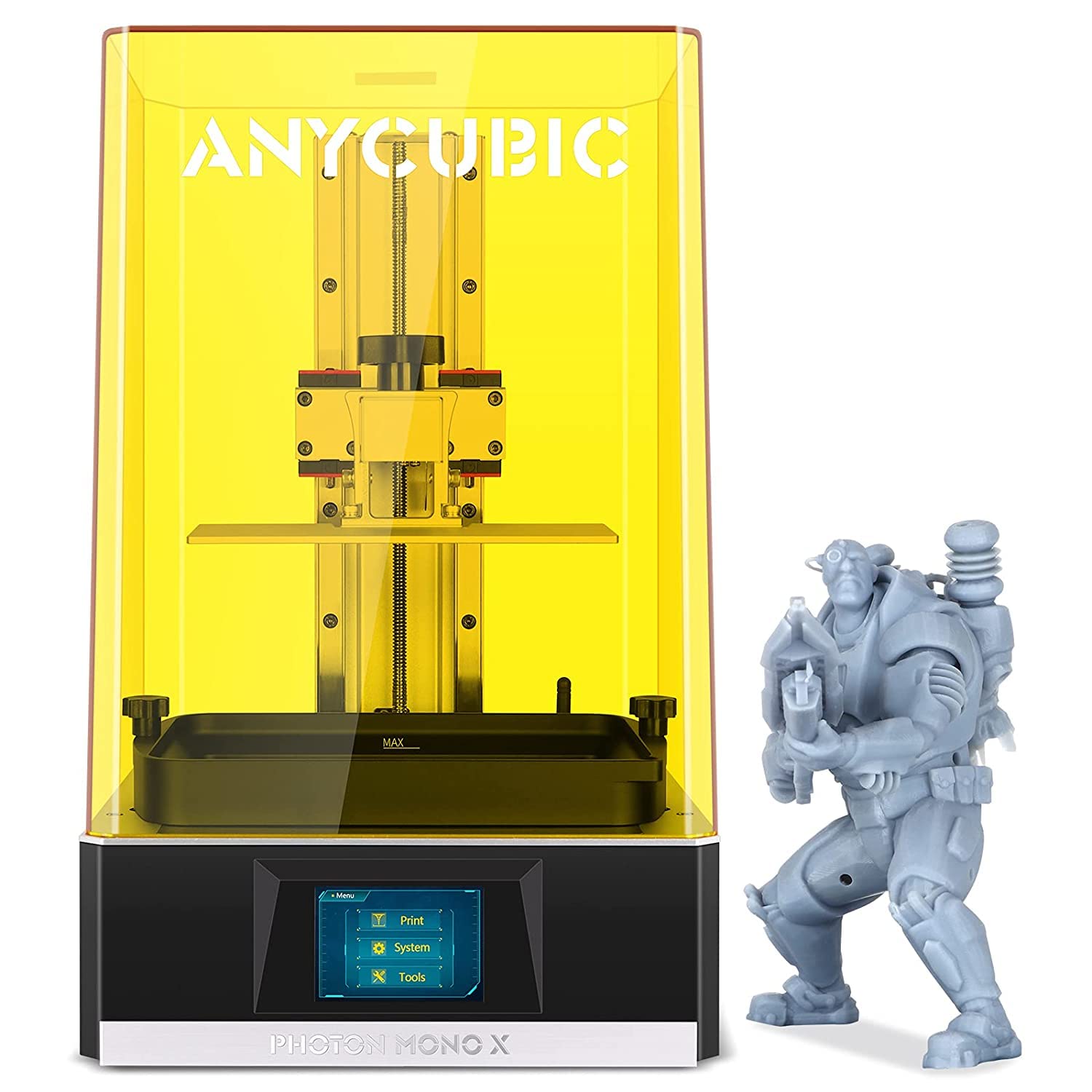
Specifications
| Material | Resin |
| Product Dimensions | 7.87 x 8.66 x 15.75 inches |
| Product Weight | 30.86 Pounds |
| Compatible Devices | Laptop |
| Connectivity Technology | USB |
With a variety of innovative, high-quality 3D printers, Anycubic has long been regarded as a leading name in the 3D printing industry. While larger, faster models are available now, very few can compete with the Anycubic Photon Mono X 4K in the under $500 bracket, setting new standards for speed and detail.
A resin printer like this can provide a lot of detail due to its screen resolution. This one has a screen resolution of 3,840 x 2,400 pixels per inch on its 8.9-inch LCD. Its layer thickness can be as little as 50 microns (0.0019 inches), and it can print at almost 2 inches per hour, which makes it faster than most resin printers.
A solid structure makes this 3D printer a good choice for consistent results, and its built-in fans keep the temperature constant. It’s a little time-consuming to set up, but it’s easier than most filament models. It has a 2.8-inch touchscreen with many functions, but files must be inserted using a USB drive. Despite a WiFi app, its features are fairly limited, and setting it up can be a hassle, so many independent testers don’t recommend it.
2. QIDI Tech X-Pro
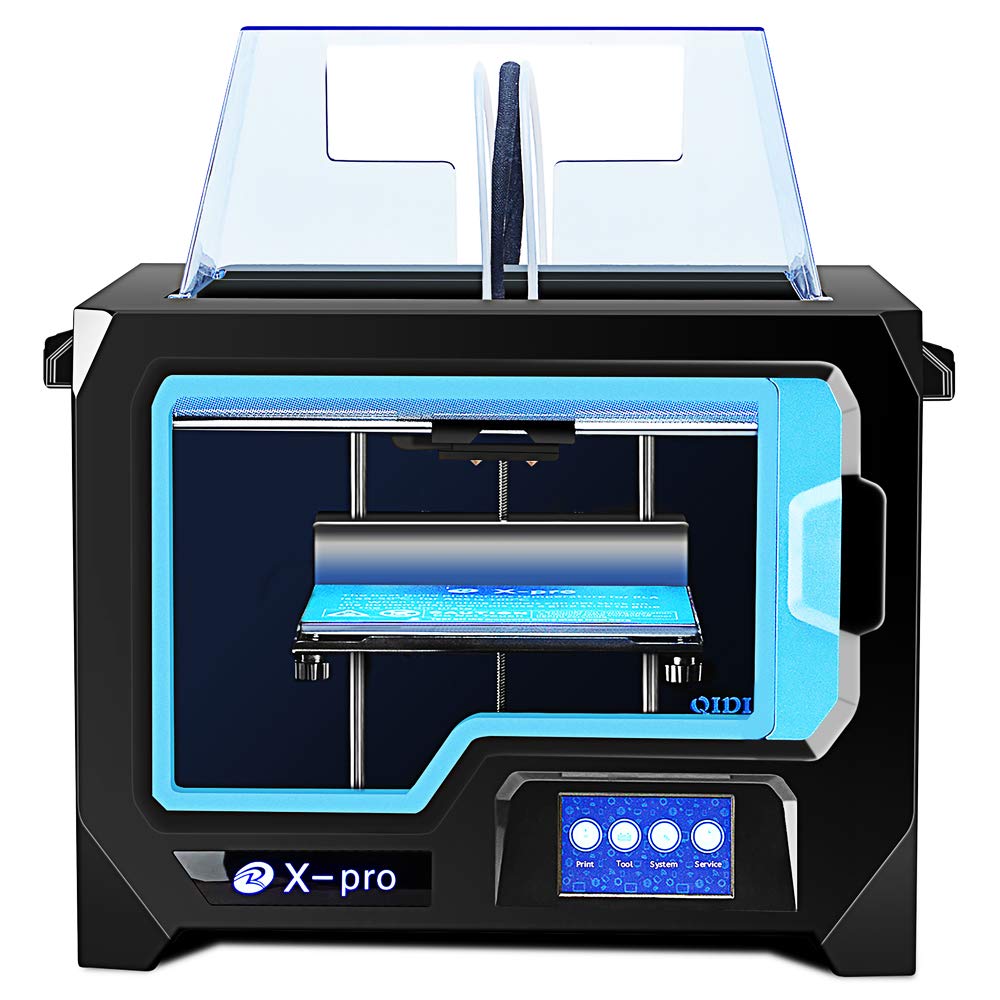
Specifications
| Material | Aluminum, Pla, Metal |
| Color | White, Red |
| Compatible Devices | Personal Computer, Laptop, Smartphone |
| Compatible Material | Acrylonitrile Butadiene Styrene, Metal, Thermoplastic Polyurethane, Polylactic Acid |
| Connectivity Technology | USB |
| Item Weight | 39.7 pounds |
| Product Dimensions | 5.9 x 5.9 x 9.1 inches |
The X-Pro is our first dual-extruder 3D printer, and its design makes it stand out from its competitors. Normally, dual-extruders cost much more, so it was surprising to see it even on this list.
Although it’s a budget printer, the X-Pro offers a lot of advantages, including a reasonable build speed of 150mm/s and the ability to process PETG.
Moreover, you can print in two colors or with two different materials thanks to the dual-extruder design.
3. ELEGOO Mars 3 MSLA 3D Printer
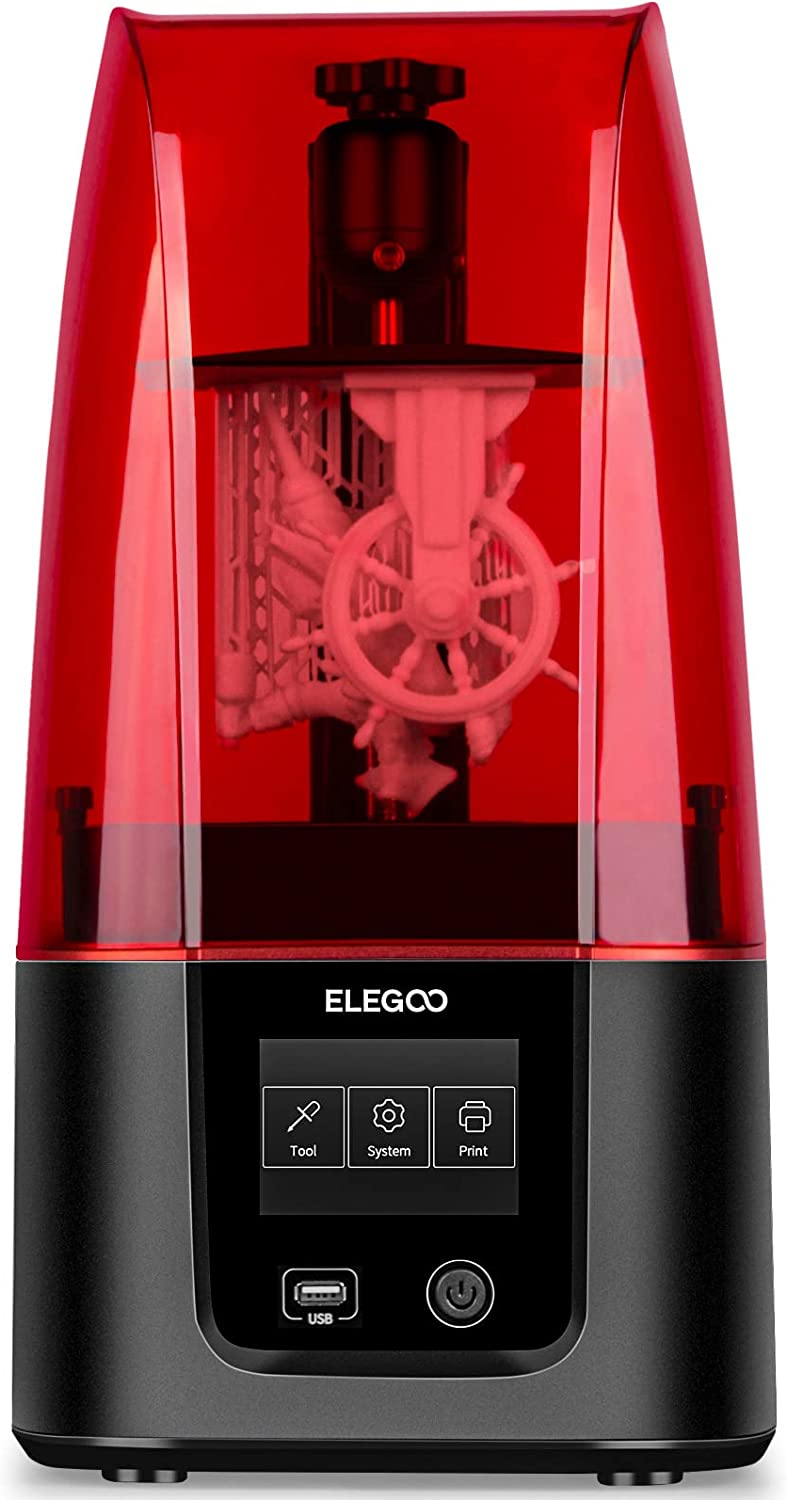
Specifications
| Material | Resin |
| Color | Black/Red |
| Item Weight | 13.67 Pounds |
| Compatible Devices | Personal Computer |
| Compatible Material | Resin, Plastic, Copper |
The Mars 3 is Elegoo’s fourth small form-factor resin printer that is very popular among 3D printing enthusiasts. Its monochrome 4K LED light source exposes the print layer through all of the pixels on the 6.6-inch display. In this version, a chip-on-board (COB) lens with a free-form surface increases UV light illumination uniformity. You can also use the Lychee slicer in addition to the Chitubox Pro slicer that comes with the Mars 3.
Due to fluctuating prices and availability, you may need to wait for the printer to be back in stock, depending on when you look.
4. ELEGOO Neptune 2 FDM 3D Printer
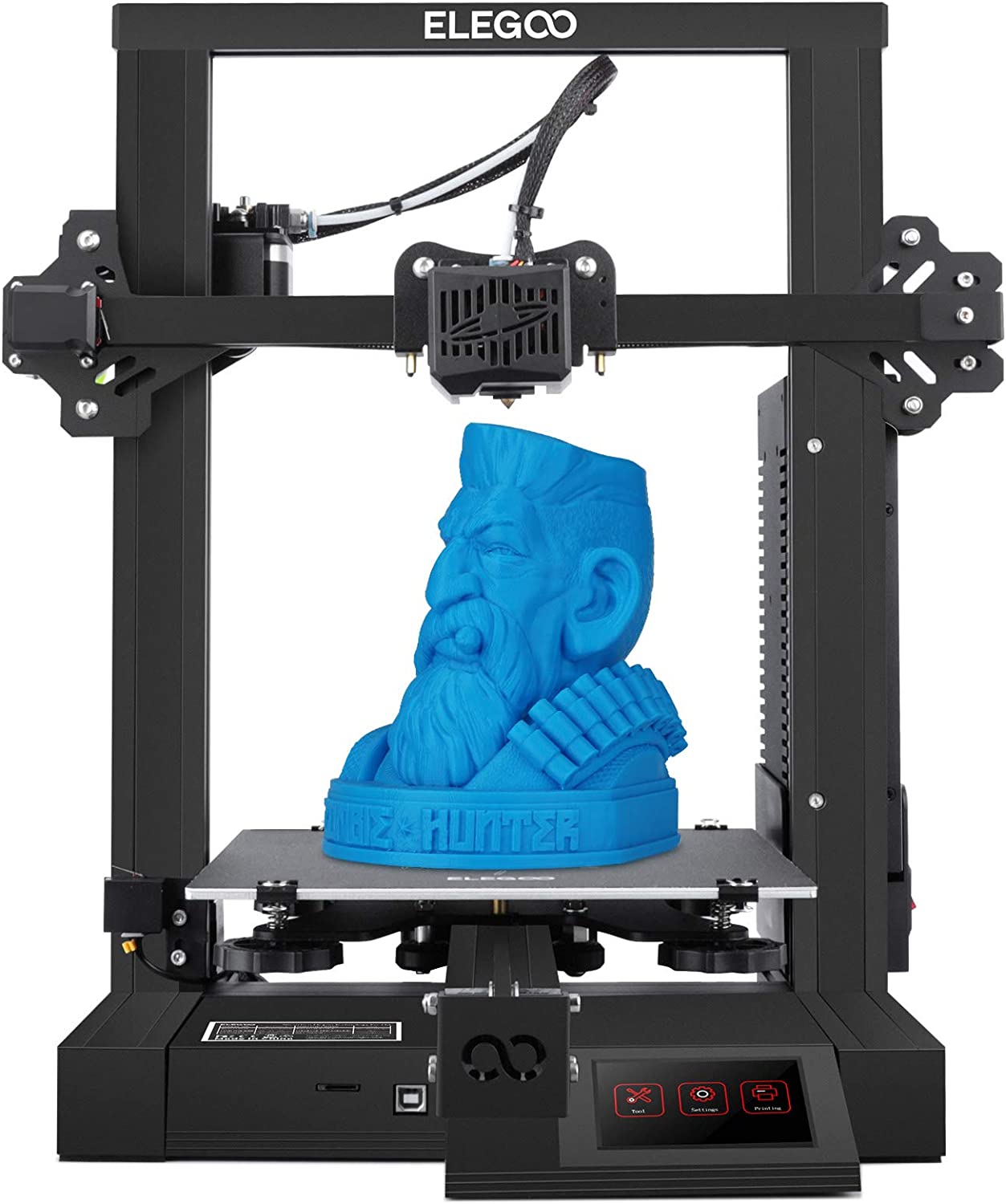
Specifications
| Material | Steel and aluminum |
| Color | NEPTUNE 2 |
| Item Weight | 15.97 Pounds |
| Supported File Format | OBJ, STL, AMF |
| Power Consumption | 250 Watts |
With a price that is well under half our $500 limit, the Elegoo Neptune 2 is one of the best budget 3D printers available on the market. The Elegoo Neptune 2’s low price alone would attract those considering 3D printing for the first time. However, the Neptune 2 has a lot more to offer.
There are several types of 3D filament printers that come as self-assembling kits. Care should be taken because errors can adversely affect performance. Thankfully, the Elegoo Neptune 2 comes with clear instructions and readily identifiable components, so setup is relatively straightforward. For accurate prints, bed leveling needs to be done manually. If you are just starting out, it may take some time to get it right, which can be frustrating.
Furthermore, despite the touchscreen display’s many features, it can be confusing at times. Fortunately, the Cura software provided is excellent and greatly assists in this regard.
Elegoo’s Neptune 2 is a great 3D printer for the money from a mechanical and functional perspective, but its interface is a little disappointing. It will take patience to get the most out of the machine, but the internet is full of resources for solving problems, and the results will be worth it.
5. Flashforge Flashforge Finder 3D Printer
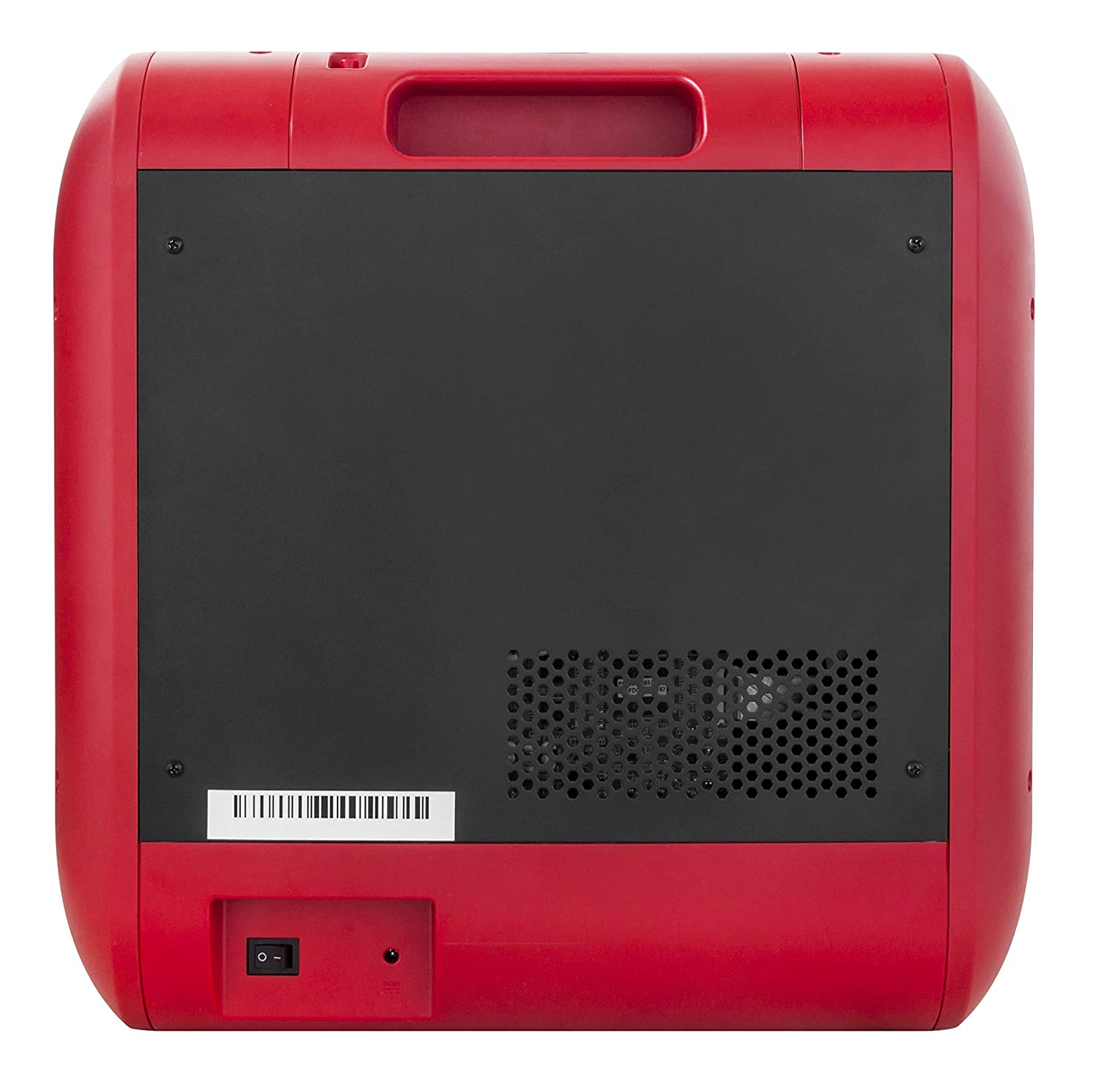
Specifications
| Material | Plastic |
| Colour | Black red |
| Item weight | 11 Kilogram |
| Product dimensions | 42 x 42 x 42 cm |
| Connection technology | Wi-Fi, USB |
| Tension | 100 Volt |
There are plenty of great 3D printers on this list that you can do on a budget! But for some people – particularly students and those just starting out – something much less than $500 might be a better option. This is where FlashForge Finder comes into play.
Even though this 3D printer is well under $500, it still competes with some of the best products in this list. This printer features a 200mm/s max print speed and an auto-leveling system that is normally reserved for much more expensive machines.
6. Mingda Magician X 3D Printers
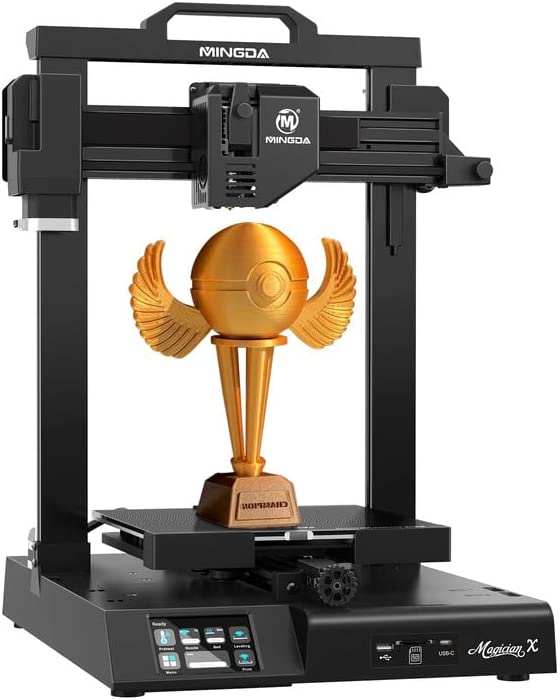
Specifications
| Material | Plastic, Metal |
| Color | Black |
| Item Weight | 20.94 Pounds |
| Compatible Devices | Laptop, Personal Computer |
| Supported File Format | STL, OBJ, AMF |
| Nozzle Diameter | 0.4 mm |
| Print Speed | <200 mm/s (recommended 60 – 80 mm/s) |
Among the features of the MINGDA Magician X are its heated build plate, direct-drive extruder, filament runout sensor, and automatic bed leveling. Flexible filaments can be printed more reliably with it. This printer has a build area of 230x230x260 mm, so it can print a wide range of mid-range prints.
Print quality with PLA is very good. The printer is rated for 260 degrees C at the hot end and is easy to assemble. It would have been nice if there had been a removable build plate since some prints stuck to the bed like puppies do when they’re clinging to their mothers. We recommend using blue tape, so you can remove the tape and free the prints. Overall, the MINGDA Magician X is a great product.
7. JGAURORA Upgraded A5S 3D Printer
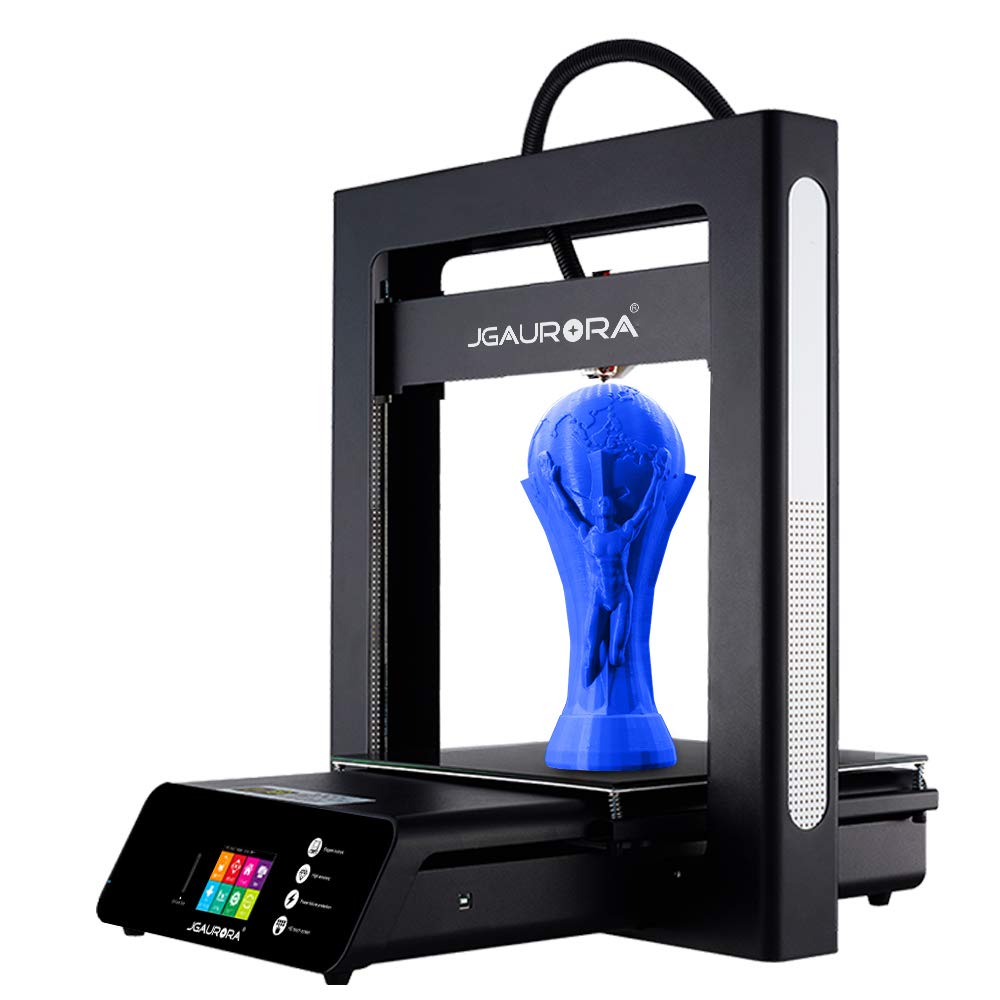
Specifications
| Technology | Extrusion (FFF- FDM…) |
| Material | ABS, Other plastics, PLA |
| OS compatibility | Linux, Mac OS, Microsoft Windows |
| Max. print speed | 5.91 in /s |
| Item Dimensions | 21.1 × 18.9 × 21.38 in |
| Item Weight | 30.42 lb |
| Filament diameter | 0.07 in |
The A5S is a 3D printer manufactured by JGAurora with large build volumes and a sleek design. It is an updated version of the A3 manufactured by JGAurora. Based on consumer feedback on previous models, the company developed AS5, which has a 2.3-inch full-color touch screen along with power recovery.
This printer utilizes FDM technology and has a single extruder. It can print structures up to 305 x 305 x 320 mm in size.
With an AS5 printer, the layer resolution varies from 0.1 to 0.3 mm. It prints at a speed of 150 mm per second, with nozzle sizes ranging from 0.4 to 1.75 mm. The printer connects via USB.
8. Artillery Sidewinder SW-X1 V4 3D Printer
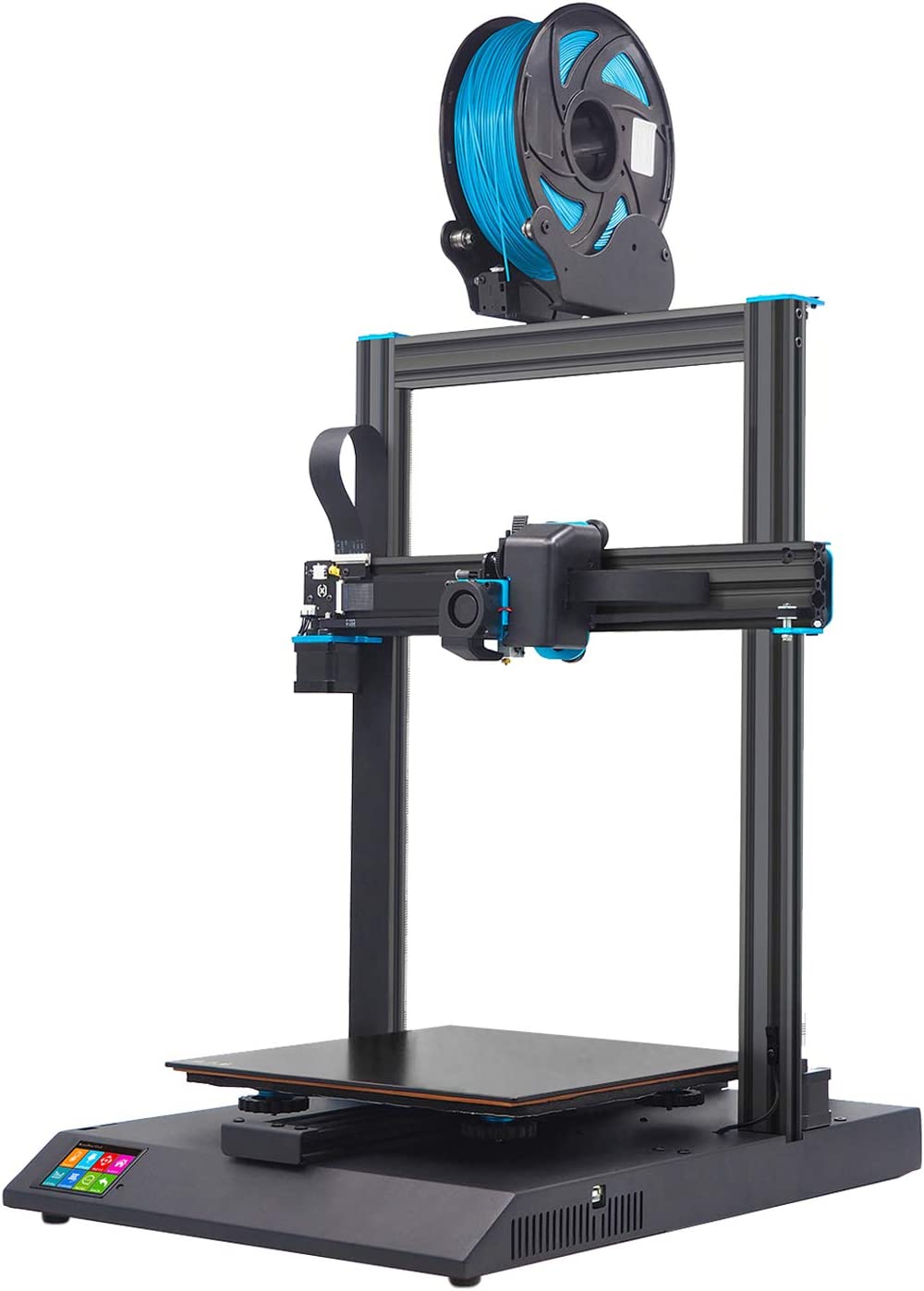
Specifications
| Material | Aluminum |
| Color | Dark |
| Item Weight | 13 Kilograms |
| Compatible Devices | Personal Computer |
| Compatible Material | Polylactic Acid, Acrylonitrile Butadiene Styrene, Thermoplastic Polyurethane |
| Maximum Print Speed | 150 mm/s |
| Build Volume | 300 x 300 x 400mm |
The Artillery Sidewinder has an impressive print volume, making it the best affordable 3D printer for making large models. The company should have cut corners elsewhere in order to offer a machine of this capability for such a low price, but it appears that it hasn’t. Although there are some minor issues that need to be addressed, they are not serious.
Artillery Sidewinder’s speed isn’t very fast, but it can produce layers of 100 microns each (0.0038 inches), so its quality is comparable to that of smaller devices. Almost complete; the only thing it needs is a ribbon cable and a spool holder. There are some feed errors with the latter, but the printer will resume where it left off if interrupted. Easy-to-use touchscreen controls are also available.
Auto-leveling is available on the Artillery Sidewinder, which is unusual for a cheap 3D printer. The glass bed heats up quickly, so it’s ready to print quickly and quietly. It takes time to set up the Artillery Sidewinder, but that’s not unusual with budget 3D printers. The machine is generally very reliable, but when problems occur, owners have trouble getting customer service.
9. Sovol SV02 3D Printer
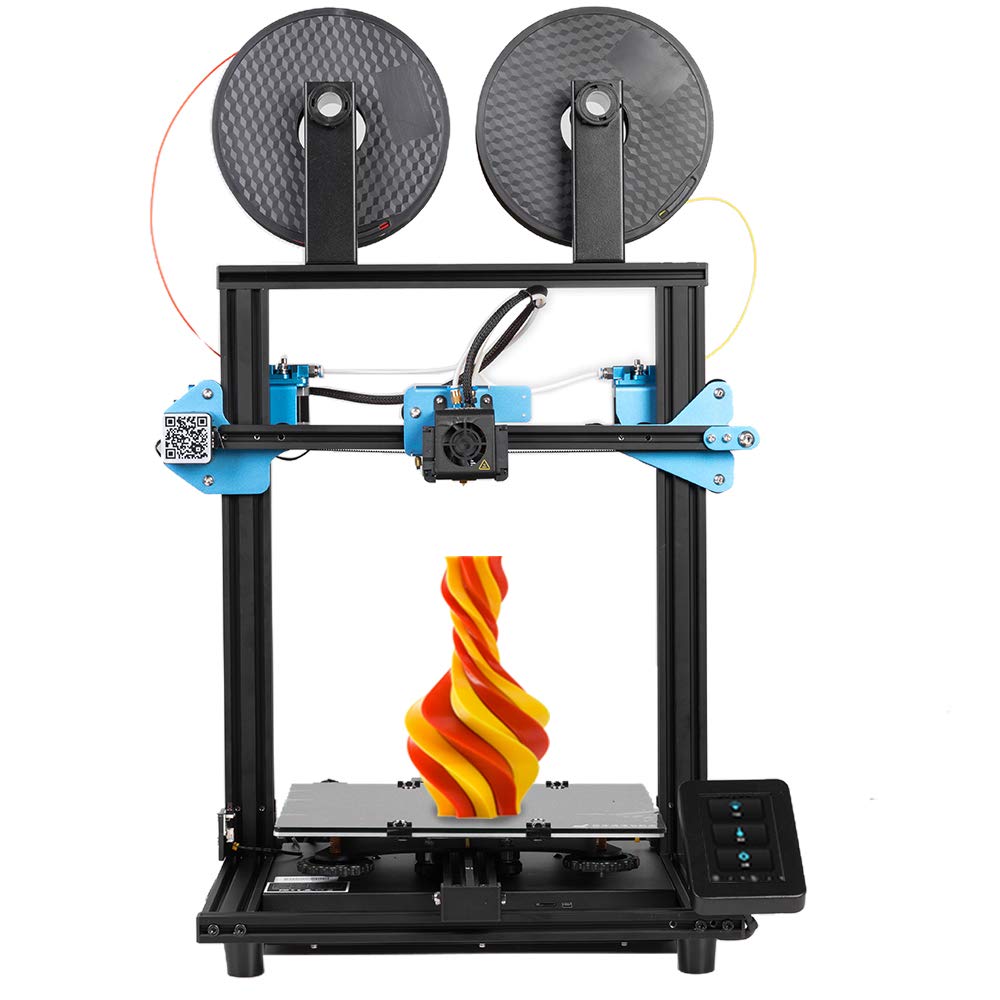
Specifications
| Material | Tempered Glass, Wood, Resin, Plastic |
| Item Weight | 26.1 pounds |
| Supported File Format | OBJ, STL, AMF |
| Power Consumption | 220 Watts |
| Package Dimensions | 24 x 22 x 11.1 inches |
This dual-extrusion printer allows you to change between two filaments mid-print by loading two filaments into the printer. It can be used to highlight in two tones or to create complex, intricate prints.
Due to its dual filament functionality in a $287 printer, it stands out. Users either love or hate this printer, which may be a result of the cost controls needed to reach that price point. The dual filament machine, however, is a powerful and worthwhile option if you’re willing to take a little risk.
10. Official Creality Ender 3 3D Printer
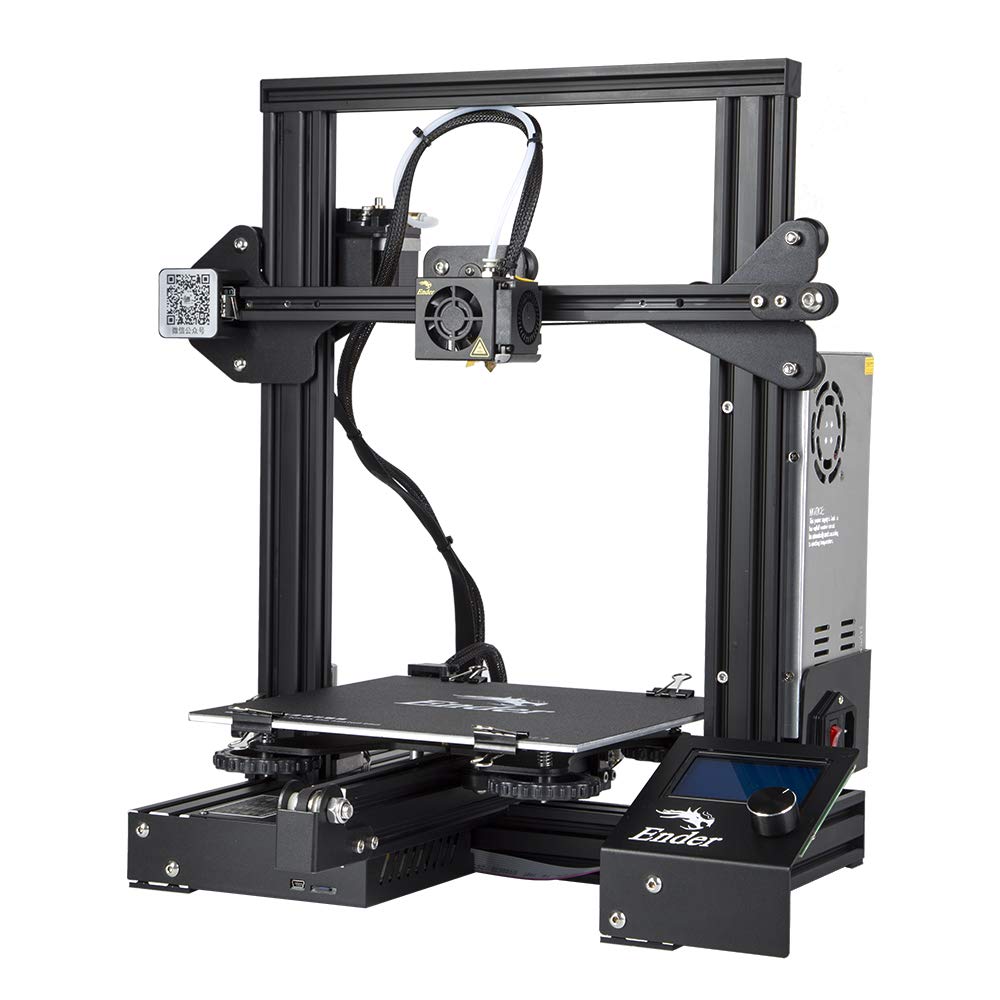
Specifications
| Material | Aluminum |
| Item Weight | 14.6 Pounds |
| Compatible Devices | Laptop, Personal Computer |
| Supported File Format | Gcode |
| Item Weight | 14.60 pounds |
| Product Dimensions | 16.14 x 16.54 x 18.31 inches |
This 3D printer has a lot in common with a lot of other low-cost 3D printers. In fact, Creality is known for producing quality 3D filament printers at competitive prices, which is why there are many copies available.
As a budget 3D printer, the Creality Ender 3 is able to produce layers at 100 microns (0.0038 inches), which isn’t as high as resin printers but is adequate and results in smooth models. The Creality Ender 3 is very quiet, heats up quickly, and has a straightforward user interface. It can be used with ABS, PETG, or TPU filaments. Many cheap rivals only use PLA filament.
Despite being a bit difficult to assemble, the Creality 3D Printer is still one of the best 3D printers for beginners. Creality claims that it takes two hours, but we feel that’s an optimistic estimate.
In addition to a fantastic support network, there are multiple machine upgrade options. Besides Creality’s excellent customer service, there are dozens of videos and other resources available online for the Creality Ender 3. Users can increase their knowledge of 3D printing without purchasing a whole new machine after mastering the basics. Add-ons are available after mastering the basics.
Download Best 3d Printer for Under $500 in 2023 PDF
You can download a PDF version of the article by clicking on the link below.
Buy Equipment or Ask for a Service
By using Linquip RFQ Service, you can expect to receive quotations from various suppliers across multiple industries and regions.
Click Here to Request a Quotation From Suppliers and Service Providers
Read More on Linquip
- The 7 Best 3D Printer for Under $1000
- The 10 Best Industrial 3D Printer
- What Is 3D Printing and How Does It Work? + Applications
- The 10 Best Large 3D Printer
- The 10 Best FDM 3d Printer + Buying Guide
- 10 Types of 3D Printing: A Comprehensive Guide
- The 9 Best 3D Printer for Under $300
- The 5 Best Chisel Sets for Woodworking + Buying Guide
- The 6 Best Dual Action Polishers
- The 10 Best Tool Box Organizer + Buying Guide
- The 7 Best Jigsaw + Buying Guide
- The 10 Best Drywall Anchors + Buying Guide
- The 10 Best Box Cutter/Utility Knife Options
- The 8 Best Soldering Irons + Buying Guide
- The 9 Best Commercial Patio Heaters + Buying Guide
- The 10 Best Glues for Metal + Tips for Choosing
- The 8 Best Cordless Drills + Buying Guide
- The 8 Best Paint Sprayers + Buying Guide
- The 10 Best Angle Grinders

